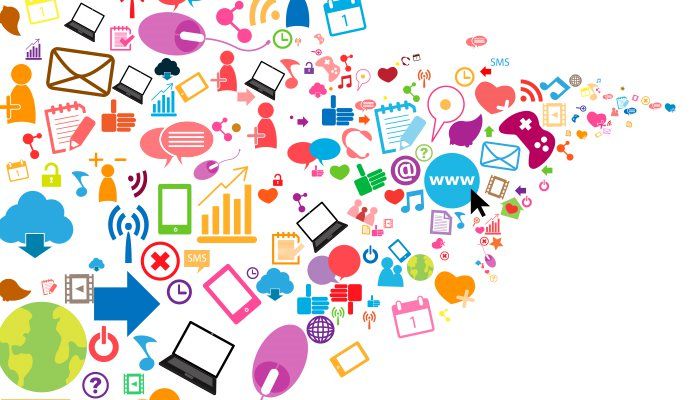Welcome to the BMC Enterprise IT Glossary. We’ve rounded up some of the most popular technology terms and theories—those that are commonly used, misunderstood, or essential to IT strategy. From old standbys to cutting-edge areas, we’ve got you covered with short, understandable definitions and links to relevant articles that go deeper on the given topic.
If you’d like to see a topic added to this list, please email us at blogs@bmc.com.
A B C D E F G H I J K L M N O P Q R S T U V Q X Y Z
Agile software development
A set of ITSM framework practices aligned with the principles of the Agile Manifesto. The software development approach follows iterative processes with changing requirements to deliver improved value at speed. Cross-functional teams self-organize and collaborate to achieve the collective goals with an incremental development strategy.
Read more:
- The Role of Agile in DevOps
- DevOps vs Agile: What’s the Difference and How Are They Related?
- Agile Roles & Responsibilities
- Top 7 Agile Certifications
Artificial intelligence
Historically a subset of computer science and statistics, artificial intelligence today is the idea that machines could mimic actual human capabilities, such as decision making. Modern AI is broken into two areas: general AI and applied AI. The concept of AI grows and shifts as technology advances, and likely will continue to do so. Currently the only solid criterion for AI success or failure is how it can accomplish applied tasks.
Read more:
- Machine Learning, Data Science, Artificial Intelligence, Deep Learning, and Statistics
- Will Artificial Intelligence Get Rid of the ‘Boring’ IT Service Management Tasks?
- Understanding AI and the Impact Intelligent Technologies Have on Businesses Today
Artificial intelligence in IT Operations (AIOps)
The use of artificial intelligence to support IT Operations functions in complex data and network environments. AIOps brings insightful decision-making capabilities to monitoring, service desk and automation functions of the ITSM strategy across hybrid on-premise and multi-cloud datacenter environments.
Read more:
- What is AIOps? Artificial Intelligence for IT Operations Explained
- AIOps Use Cases: From Theory to Practice
- Getting Real Results Today with Artificial Intelligence
- ITSM and AI: How AI Is Changing IT Service Management
Availability
The probability that a system performs correctly at a specific time instance. The service must be operational and adequately satisfy the defined dependency requirements at the time of its usage.
Read more:
Change management
The ITSM discipline focused on controlling the change lifecycle. It includes standardized processes and automation technologies to support change planning, implementation and management activities. The goal of change management is to manage risk and reduce disruption to IT infrastructure operations and services due to change processes.
Read more:
- Types and Levels of Change Management
- Getting IT Change Management Right
- Multi-Cloud Blog Change Management in AWS Hybrid Environment
Chargeback
A company that implements an IT chargeback policy is actually billing each department for the number of technology resources used for a given period. Organizations might use IT chargebacks in order to hold departments accountable, gain insights into how departments use resources, and respond to resource needs with agility. This is a controversial process since, in most cases, departments don’t have to pay for usage of things like utilities and other company resources.
Read more:
Containerization
An OS-level virtualization method that organizes multiple microservices containers and application layers running isolated workload processes.
Read more:
- What is a Container? Containerization Explained
- Containers in the Multi-Cloud
- Containers vs Virtual Machines: What’s The Difference?
- What is a Container Pipeline?
- How Containers Fit in a DevOps Delivery Pipeline
Continuous integration
The process of integrating code changes in a centralized repository on a continuous basis using automation tools for build validation and configuration operations.
Read more:
- What is CI/CD? Intro to Continuous Integration and Continuous Delivery
- Differences Between Continuous Integration (CI), Delivery (CD), and Deployment
Continuous delivery
The process of delivering continuously integrated code changes to production environment following automated testing for performance and functionality. The build is manually reviewed and approved before releasing to end-users.
Read more:
- What is CI/CD? Intro to Continuous Integration and Continuous Delivery
- Differences Between Continuous Integration (CI), Delivery (CD), and Deployment
Continuous deployment
The process of automatically releasing code changes to end-users once the functional and validated release cycle is completed. No manual review or approval is required.
Read more:
Data fabric
A converged platform architecture and capabilities supporting diverse data management needs and delivering the right IT service levels across all disparate data sources and infrastructure types. It operates as a consolidated framework to manage, move and protect data across multiple isolated and incompatible data center deployments.
Read more:
DevOps
DevOps characterizes the combination of practices, tooling and cultural shift that enable efficient and effective IT service delivery and software release cycle through the adoption of Agile and Lean principles.
Read more:
- BMC DevOps Blog
- BMC DevOps Guide: 30+ articles starting with What is DevOps? A Basic Introduction
- DevOps vs Agile: What’s the Difference and How Are They Related?
Edge computing
The computational processing of sensor data away from the centralized nodes and close to the logical edge of the network, toward the original sources of data. Instead of processing the information in centralized network systems, the processing power is decentralized at the network edge to deliver real-time data processing capability.
Read more:
EXTech
Short for “employee experience technology”, EXTech pulls from fields like neuroscience, behavioral economics, and positive psychology to motivate individuals and encourage desired behaviors. Defined by Gartner as “a diverse collection of employee-facing solutions designed to influence and improve the employee experience and organizational culture,” EXTech isn’t only about engagement. EXTech solutions are meant to support the entire employee experience.
Read more:
General Data Protection Regulation (GDPR)
A unified data protection law designed to protect the privacy of individuals in the EU. GDPR includes a set of guidelines governing the collection and processing of user data that empowers data subjects with control over the use of their personal information. The legal framework also mandates quick, effective and transparent response to data breach incidents.
Read more:
Hyper-converged infrastructure
Software-defined hypervisor level combination of networking, server and storage services into a single datacenter application that is decoupled from the underlying infrastructure operations.
Read more:
Incident management
The ITSM discipline focused on maintaining optimal service operations. The goal of incident management is to reduce the risk of IT incidents and expediting service restoration following an incident of service disruption.
Read more:
Intelligent edge
A growing system connected devices that aggregate, process, and address data at the logical edge of the network closer to the original data sources.
Read more:
ITIL® (formerly known as IT Infrastructure Library)
An IT Service Management framework that provides best practice guidelines on aligning IT services with organizational goals. The guidelines encompass all activities, including policies and processes associated with IT service delivery and management across their lifecycle.
Read more:
- BMC ITIL 4 Guide: 20+ articles starting with What is ITIL 4? ITIL 4 Framework & Processes Explained
- BMC ITIL 3 Guide: 20 articles starting with ITIL V3 Processes & Best Practices
- ITSM vs ITIL: What’s the Difference?
- ITSM and ITIL Certifications
IT Service Management (ITSM)
A concept designed to maximize business value through efficient and effective use of IT services and solutions. ITSM is based on the principle of continuous improvement and leverages a range of frameworks to realize these goals in various enterprise IT environments and business use cases.
Read more:
- ITSM Implementation Tips and Best Practices
- ITSM Frameworks: Which Are Most Popular?
- ITSM and ITIL Certifications
- ITSM Trends
Mean time to detection (MTTD)
The average time elapsed between the occurrence of a component failure and its detection.
Read more:
Mean time between failure (MTBF)
The average time duration between inherent failures of a repairable system component. The following formulae are used to calculate MTBF:
Read more:
- System Reliability & Availability Calculations
- MTBF vs. MTTF vs. MTTR: Defining failure for IT and data center environments
Mean time to failure (MTTF)
The average time duration before a non-repairable system component fails. The following formula is used to calculate MTTF:
Read more:
- System Reliability & Availability Calculations
- MTBF vs. MTTF vs. MTTR: Defining failure for IT and data center environments
Mean time to recovery (MTTR)
The average time duration to fix a failed component and return to operational state. This metric includes the time spent during the alert and diagnostic process before repair activities are initiated. (The average time solely spent on the repair process is called mean time to repair.)
Read more:
Mean time to repair (MTTR)
The measure of time it takes to get a product or subsystem up and running after a failure.
Read more:
- System Reliability & Availability Calculations
- MTTR Explained: Repair vs Recovery in a Digitized Environment
- MTBF vs. MTTF vs. MTTR: Defining failure for IT and data center environments
Mean time to resolve (MTTR)
The average time duration to fix a failed component and return to an operational state. This metric includes the time spent during the alert and diagnostic processes, before repair activities are initiated.
Read more:
- System Reliability & Availability Calculations
- Mean Time To Resolve (MTTR) as a Service Desk Metric
- MTBF vs. MTTF vs. MTTR: Defining failure for IT and data center environments
Microservices architecture
The software design approach that develops applications as a combination of single-function, modular and loosely coupled components that can be deployed independently with dedicated interfaces and operations.
Read more:
Monolithic architecture
The traditional software design approach that combines all interconnected and interdependent software components into a single autonomous unit.
Read more:
Reliability
The probability that a system performs correctly during a specific time duration. During this correct operation, no repair is required or performed, and the system adequately follows the defined performance specifications.
Read more:
Service level agreement (SLA)
A documented agreement between a service provider and a customer that identifies both services required and the expected level of service. The service is measured in terms of specific quantifiable metrics that represent end-user experience of service dependency. The agreement defines the responsibilities and liabilities of the service provider in adequately meeting the expected service levels.
Read more:
- SLA Best Practices for ITIL, Help Desk & Service Desk
- SLAs for ITIL and ITSM – 5 Best Practices for Creating Service Level Agreements
Shadow IT
The use of IT solutions and services without organizational approval and support. The practice implies that IT governance protocols are bypassed by the workforce to access and communicate business information with solutions and services without informing appropriate stakeholders.
Read more:
Showback
IT showbacks offer departmental visibility into IT resource usage without charging departments for their use. When a company uses showbacks, it sends a document (similar to a billing statement) to each department indicating that department’s IT usage. That department, however, isn’t expected to pay for it.
Read more:
Site reliability engineering (SRE)
SRE is a methodology designed to ensure continuous operations of cloud-enabled infrastructure, solutions, and services. An SRE job typically combines engineering or development tasks with IT operations tasks.
Read more:
Tickets per user
One of many service desk metrics, tickets per user accounts for support volume, efficiency, and engagement quality that your service desk agents provide in response to customer demands.
Read more:







